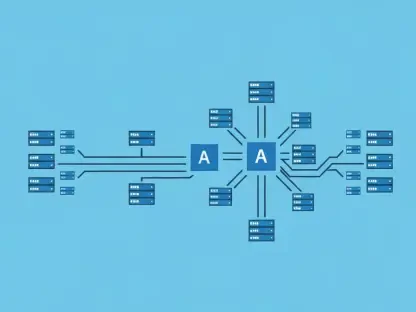I’m thrilled to sit down with Vijay Raina, a renowned expert in enterprise SaaS technology and software design. With his deep expertise in crafting innovative solutions and providing thought leadership in software architecture, Vijay brings a unique perspective on how organizations can foster creativity and growth. Today, we’ll dive into the concept of cross-pollination as a strategic advantage, exploring how sharing ideas across teams can drive innovation, enhance employee engagement, and break down barriers within companies. We’ll also discuss the role of leadership, practical strategies, and the challenges of cultivating a collaborative culture.
What does cross-pollination mean to you when it comes to fostering innovation in a workplace?
To me, cross-pollination in the workplace is about bringing diverse perspectives together by encouraging teams to share knowledge and ideas across departments. It’s like blending different skill sets and experiences to create something entirely new. In the context of SaaS and software development, this could mean having engineers collaborate with marketing or customer support to uncover user pain points that might not surface in a siloed environment. It sparks creativity by challenging the status quo and pushing people to think beyond their usual scope.
How have you seen cross-pollination lead to fresh ideas or breakthroughs in your experience with software teams?
I’ve seen it work wonders in projects where we intentionally mixed teams from different functions. For instance, in one project, we brought together developers and data analysts to tackle a performance issue in a SaaS platform. The analysts provided insights into user behavior that the developers hadn’t considered, leading to a redesign of key features that significantly improved user retention. That kind of breakthrough wouldn’t have happened if each team had stayed in their own lane—it was the collision of ideas that made the difference.
Why do you believe cross-pollination is critical for keeping a company at the forefront of innovation, especially in tech?
In the tech world, innovation is everything. Cross-pollination prevents stagnation by exposing teams to new ways of thinking. When people are stuck in their own bubbles, they recycle the same ideas and miss out on broader opportunities. By connecting different groups—like pairing product designers with backend engineers—you create a melting pot of perspectives that can lead to groundbreaking solutions. It’s about staying agile and relevant in a fast-moving industry where standing still isn’t an option.
In what ways does cross-pollination help tear down silos between departments in a software-focused organization?
Silos are often the biggest barrier to progress in tech companies. Cross-pollination breaks them down by fostering communication and shared goals. For example, when a development team works directly with customer success, they start to understand the real-world impact of their code on users. This builds empathy and alignment, so instead of working in isolation, departments start to see themselves as part of a larger ecosystem. It’s about creating bridges where there were once walls.
How have you noticed cross-pollination influencing employee engagement and motivation in your work with SaaS teams?
I’ve seen employees light up when they get the chance to step outside their usual roles and learn from others. When a developer, for instance, gets to contribute to a strategic discussion with the product team, they feel their voice matters. It boosts motivation because they’re not just coding in a vacuum—they see how their work ties into the bigger picture. This kind of engagement creates a sense of purpose, which is critical for retention and productivity in high-pressure tech environments.
What are some of the biggest challenges you’ve encountered when trying to encourage cross-pollination in organizations?
One major challenge is time. Teams in SaaS environments are often swamped with deadlines and routine tasks, leaving little room for exploration. There’s also resistance to change—some folks are comfortable in their niche and wary of stepping into unfamiliar territory. I’ve had to navigate situations where teams prioritized short-term deliverables over long-term innovation, which can stifle collaboration. It takes persistent effort to shift that mindset and carve out space for cross-functional work.
How can leaders play a pivotal role in making cross-pollination a success within their teams?
Leaders are the linchpin. They need to model openness and trust, giving teams the freedom to experiment without fear of failure. In my experience, when leaders are transparent about goals and even their own missteps, it creates a safe space for sharing ideas. They also need to actively facilitate connections—whether through cross-functional projects or open forums. It’s about setting the tone that collaboration isn’t just nice to have; it’s a core part of how the organization operates.
What practical strategies have you found effective for promoting cross-pollination among diverse tech teams?
I’ve seen great results with cross-functional teams where, say, a UI designer works alongside a cloud engineer on a project. Setting up these teams with clear objectives and regular check-ins helps everyone stay aligned. I’m also a fan of informal learning opportunities like lunch-and-learn sessions where teams present their challenges and wins. Additionally, leveraging digital tools for knowledge sharing—like internal wikis or chat platforms—makes it easy for ideas to flow across departments in real time.
Looking ahead, what is your forecast for the role of cross-pollination in shaping the future of innovation in SaaS and software development?
I think cross-pollination will become even more critical as SaaS and software development continue to evolve at a breakneck pace. With technologies like AI and cloud computing blurring the lines between traditional roles, companies that embrace collaboration across disciplines will be the ones to lead. I foresee organizations investing more in platforms and cultures that enable seamless idea-sharing, making cross-pollination not just a strategy but a fundamental way of working. Those who don’t adapt risk being left behind in an increasingly interconnected tech landscape.









